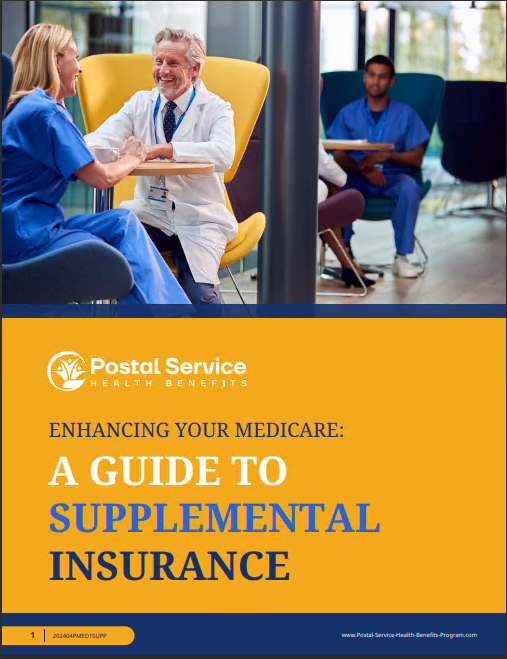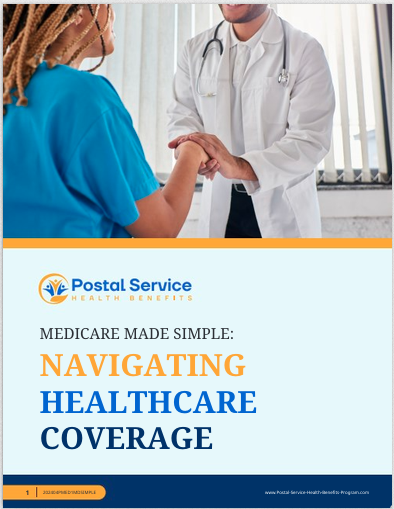Key Takeaways:
- Postal workers can secure their financial future by understanding how PSHB benefits support disability planning.
- PSHB offers options that enhance long-term security, helping postal workers navigate disability challenges with ease.
Disability Benefits for Postal Workers: How PSHB Can Help You Plan Ahead
Postal workers dedicate years of service to ensure the efficient functioning of our mail system, and with that dedication comes a set of unique benefits, including disability coverage. Planning for unexpected life events, such as a disability, is crucial for postal workers. The Postal Service Health Benefits (PSHB) program offers a variety of supports, but understanding how these benefits work and how they can assist during challenging times is key. By being proactive, postal employees can secure their financial future in the face of unforeseen disabilities.
Understanding Disability Coverage for Postal Workers
Disability insurance is designed to replace a portion of income if a person is unable to work due to an injury or illness. For postal workers, navigating the world of disability benefits can be a bit complex, but it’s important to have a clear understanding of what’s available through the PSHB program.
Postal workers, like other federal employees, have access to disability benefits under the Federal Employees Retirement System (FERS) or the Civil Service Retirement System (CSRS). This coverage ensures that if you become disabled before retirement age, you can still receive a portion of your salary, providing much-needed financial relief during difficult times.
The PSHB offers postal workers an additional layer of support, helping them integrate their health and disability benefits to ensure they are well cared for during a period of disability. This helps ensure that even with reduced income, postal workers can continue to receive critical medical coverage without significant gaps.
PSHB: A Lifeline for Postal Workers
The PSHB program is crucial because it consolidates postal workers’ healthcare options and makes them more manageable. It’s specifically tailored to meet the needs of postal employees, offering a variety of plans and options designed to fit different health scenarios, including short-term or long-term disabilities.
When facing a disabling condition, the PSHB offers postal workers access to plans that support ongoing medical care, rehabilitation services, and other essentials. This means that postal workers don’t have to choose between paying their medical bills and covering other essential living expenses. Instead, they can rely on their PSHB benefits to stay financially afloat while focusing on recovery.
Practical Steps to Make the Most of PSHB Benefits
-
Reviewing Your Options: Postal workers should regularly review their PSHB options to ensure they are enrolled in a plan that best suits their needs, especially as they near retirement or face increased health risks. Understanding the specific disability coverage included in each plan is critical.
-
Coordinating with Other Benefits: It’s important for postal workers to coordinate their PSHB benefits with other available disability benefits, like FERS or CSRS. This can help maximize the total benefits available and reduce out-of-pocket expenses during a period of disability.
-
Planning Ahead: Proactively planning for a potential disability is key. Postal workers should explore supplemental disability insurance to cover gaps that may exist in their PSHB or FERS disability plans. By taking these steps early, they can avoid financial hardship in the event of an unexpected disability.
What Happens if You Become Disabled?
If a postal worker becomes disabled, the first step is to file a claim under the PSHB program. This process involves submitting documentation from medical providers, including evidence of the disabling condition and how it impacts the worker’s ability to perform their job.
During this time, postal workers can also access short-term disability benefits. Short-term disability coverage typically provides a portion of income replacement for a specified period, such as six months, before long-term disability coverage takes effect.
Once the short-term disability period ends, postal workers may qualify for long-term disability benefits, which continue to provide income replacement. However, these benefits usually offer a smaller percentage of the worker’s previous salary. Having an understanding of how this transition works, and what benefits are available, can ease the financial stress of being out of work.
Navigating Long-Term Disability Challenges
For postal workers who face long-term disabilities, it’s essential to have a solid understanding of the available options. Long-term disability benefits can last for several years or until the employee reaches retirement age, depending on the plan they’re enrolled in.
During this time, postal workers should also consider additional support services offered under PSHB plans. This could include access to rehabilitation programs, mental health services, and specialized care for chronic conditions. Ensuring continuous care is crucial not only for physical recovery but also for maintaining emotional well-being during long-term disability.
How PSHB Supports Retirement Planning
In addition to disability coverage, the PSHB program also plays a role in supporting postal workers’ retirement plans. If a postal worker becomes disabled and can no longer work, they may be eligible to apply for disability retirement through FERS. This allows them to receive a portion of their retirement benefits early due to their disability.
By planning ahead and utilizing PSHB benefits in conjunction with other retirement resources, postal workers can make a smoother transition into retirement, even if they face disability before reaching their planned retirement age. The combination of disability income and healthcare coverage ensures that their financial future remains secure.
Staying Informed About Changes in PSHB
Postal workers need to stay informed about changes to the PSHB program. With evolving healthcare laws and benefit adjustments, it’s important to regularly check for updates that might affect disability benefits or healthcare options.
Whether through annual open enrollment or periodic PSHB updates, staying on top of the latest changes ensures that postal workers make informed decisions regarding their benefits. This helps them avoid any disruptions in coverage and ensures that they are maximizing their PSHB benefits as their needs change over time.
Planning for the Unexpected: How PSHB Helps
Many postal workers don’t anticipate needing disability benefits during their career, but accidents, illnesses, or chronic conditions can happen unexpectedly. The PSHB program helps postal workers prepare for these unforeseen events by offering comprehensive support tailored to their unique needs.
By planning ahead and understanding their PSHB options, postal workers can ensure they have access to essential medical care and financial support if a disability strikes. This proactive approach not only protects their health but also shields their family from potential financial strain.
Simple Steps to Strengthen Your Disability Planning
-
Know Your Benefits: Stay updated on the disability benefits available through PSHB and other federal programs. Regularly review your plan and adjust as needed.
-
Supplement Where Needed: Consider purchasing additional disability insurance to fill any gaps in coverage. This can provide more robust financial protection if you’re unable to work due to a long-term disability.
-
Stay Informed: Keep up with changes to the PSHB program, especially as you near retirement age or if your health situation changes. This ensures you’re always making informed decisions about your benefits.
Wrapping Up Your PSHB Disability Planning Strategy
Disability benefits through the Postal Service Health Benefits (PSHB) program provide postal workers with crucial financial support and healthcare coverage when they need it most. By planning ahead, postal workers can take advantage of these benefits and ensure a secure future for themselves and their families.
While navigating the complexities of disability insurance may seem daunting, the right planning and knowledge can make the process much smoother. Postal workers should review their options regularly, coordinate benefits with other available programs, and consider supplemental coverage if needed. The PSHB program offers a comprehensive support system to help postal workers through tough times, making it an invaluable resource for long-term planning.







